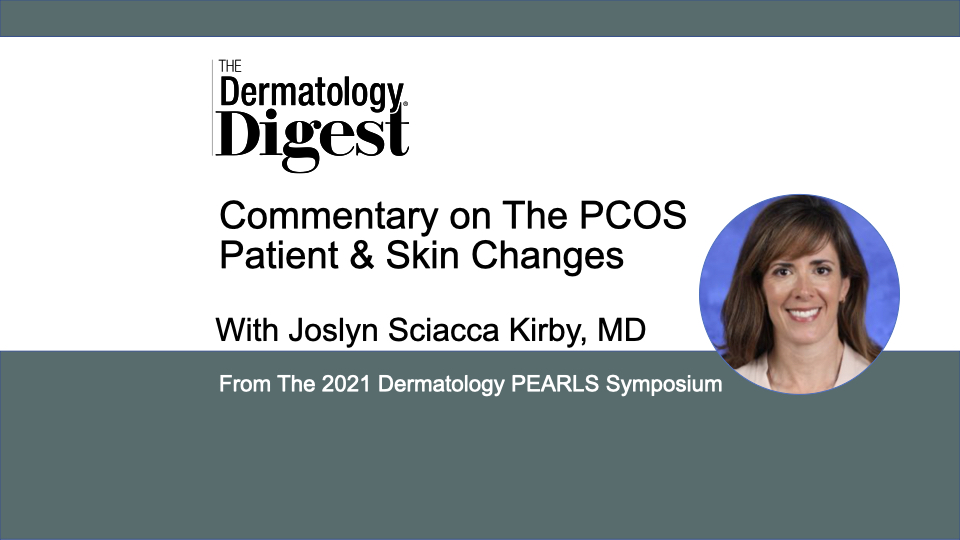Dr. Joslyn Sciacca Kirby discusses the dermatologist’s role in recognizing skin changes associated with polycystic ovary syndrome.
Joslyn Sciacca Kirby, MD, is Associate Professor of Dermatology, The Pennsylvania State University, Hershey, Pennsylvania
“Some of the comorbidities that are most common with PCOS are skin conditions we do see a lot of—acne, androgenetic hair loss or female pattern alopecia… hidradenitis, which is near and dear to my heart, and then hirsutism, so excess hair growth,” said Joslyn Sciacca Kirby, MD, who presented “The PCOS Patient & Skin Changes” at the 2021 Dermatology PEARLS conference.
“So, especially for those patient populations, [it’s important] to have that tingle in the back of our brain that says maybe this person has PCOS.”
According to Dr. Kirby, about 1 in 10 to 20 women of reproductive age will have PCOS, or polycystic ovary syndrome. Dermatologists, she said, play a key role in diagnosing the syndrome because of the number of female patients they see who are between the ages of 20 and 45.
“PCOS is one of the most frequent causes of infertility and so it can help our patients to manage that aspect of their lives.”
Uncontrolled PCOS also puts women at higher risk for additional comorbidities, including depression, anxiety, metabolic syndrome—including type-2 diabetes and high cholesterol—obstructive sleep apnea, and nonalcoholic steatohepatitis, said Dr. Kirby.
“Important things that, again, mean that having the suspicion of PCOS helps this person achieve better general health because of these comorbidities that they’re at risk for.”
Diagnosing PCOS
Diagnosis is made by meeting 2 of 3 criteria, said Dr. Kirby.
First, there are the dermatologic comorbidities that bring patients to the dermatology practice, including hirsutism, androgenetic hair loss, and acne—all clinical signs of hyperandrogenism.
“It’s not a requirement that we do the labs and have them confirm what we’re seeing clinically… just the clinical signs of hyperandrogenism are sufficient.”
Second is an-ovulation or oligo-ovulation (having none or fewer than eight menses per year), information easily gleaned from taking a patient history.
When patients present with clinical sign of hyperandrogenism, she asks about oligo-ovulation, then progresses to a conversation that brings their gynecologist into the fold.
“…our OB/GYN colleagues are really going to be the ones who can help us fully manage these patients to confirm the diagnosis of PCOS [and] to collaborate with us on the treatment and management of this condition, since many of the treatments for the skin can also help with some of the underlying challenges that these women also have such as infertility, and working with the GYN to decide what their conception plans are.”
The third is using an ultrasound that shows polycystic ovaries, she said.
Managing PCOS
In terms of managing acne as a visible manifestation of PCOS, many of the standard treatments would be appropriate, including topical/oral retinoids or antibiotics, said Dr. Kirby. However, hormone-based treatments, including those that contain antiandrogen properties—drospirenone, spironolactone, or metformin—may be better indicated, as they can also help with other manifestations of PCOS.
“The other manifestations of PCOS we talked about are the hirsutism and a lot of that is really the management of the hormones because those hair follicles are responding to the excess amount of the androgen. So, the hormone inhibitors like spironolactone or finasteride can help with hirsutism. The other things that can help are metformin and drospirenone-containing oral contraceptives.”


